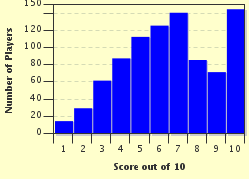Quiz Answer Key and Fun Facts
1. There are many types of maps out there - topographical, political, climate, economic and road maps to name a few - but almost all maps have one common symbol on them that indicates the cardinal points, or at minimum where north is. What is it called?
2. On a topographic map, contour lines are used to show land elevation. All those irregularly shaped lines can be confusing, so your legend shows you what each type of line represents. Which of these types of contour line is the thickest, and is accompanied with a number indicating the elevation?
3. Many maps require the use of a scale to determine distances. If your map has a ratio of 1:50,000 then how far would one inch on the map get you in the real world?
4. The use of color on a map can vary greatly, depending on the type of map one is referring to. Generalities can often be made, however. For instance, blue typically represents water, and green usually refers to forested areas. On a typical road map or political map, what does yellow normally signify?
5. A problem to contend with when using a map for compass navigation is something called magnetic declination. Before you can use your compass, you need to know the proper adjustment to make so that it will work with your map. Which of these is not a factor that you need to consider?
6. Depending on the type of map that you need, it may be necessary for the legend to indicate what type of projection has been used to produce the map. Which of these is not an established type of map projection?
7. There are different types of relief maps, but the type that shows elevation as bands of color is called a hypsometric tint map. The legend on this kind of relief map would show what color as the highest elevation?
8. Different economic factors in our world are often represented on maps, using a color-scheme to identify each country's standing. It is important to check the map legend to determine what kind of economic map it is. Which of the following would not be found in an economic map's legend?
9. Probably one kind of map we see most often is the weather map on your local television news broadcasts. Movement of air masses is shown by 'fronts' and use lines with colors and shapes to represent different types of fronts. What does a blue line with blue triangles on it represent?
10. If you are the type of person who has evolved to GPS usage, do not fret! There are legends for the symbols on your digital maps as well. If you use a Garmin GPS, for instance, what does an anchor represent?
Source: Author
reedy
This quiz was reviewed by FunTrivia editor
Pagiedamon before going online.
Any errors found in FunTrivia content are routinely corrected through our feedback system.


